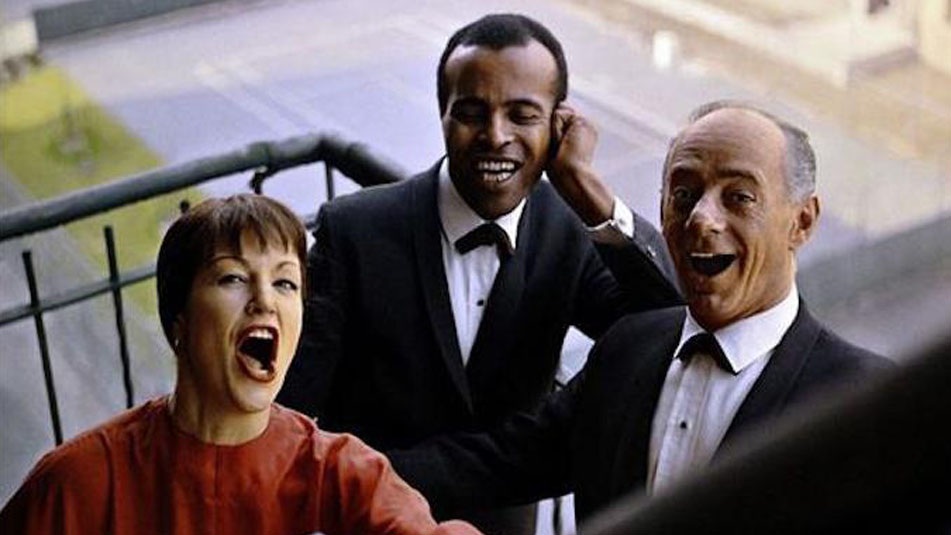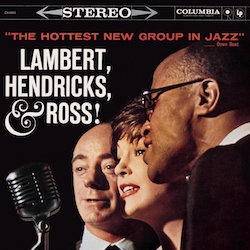A LOOK BACK AT
“THE HOTTEST NEW GROUP IN JAZZ”
May 15, 2017 | by Ross Eustis

Dave Lambert, Jon Hendricks and Annie Ross: "The Hottest New Group In Jazz"
Where did the album title come from? In the late 1950s, after the powerhouse vocal trio had already released three albums, DownBeat magazine dubbed them "the hottest new group in jazz," and it stuck. The buzz largely stemmed from the group popularizing a new vocal style — "vocalese" — where words are sung to melodies or improvised solos that were originally recorded as an instrumental. Check out Lambert, Hendricks & Ross' spin on the Count Basie classic "Everyday I Have The Blues.
It was said Jon Hendricks first became hip to vocalese in 1952, when he heard King Pleasure sing Eddie Jefferson's lyrics to bebop saxophonist James Moody's improvised solo over Jimmy McHugh and Dorothy Fields' classic "I’m In The Mood For Love," which Moody cleverly retitled “Moody’s Mood For Love." In many ways, this new vocal approach fully embraced the jazz sensibility – rather than singing pop songs in the jazz style, vocalists now penned lyrics to new jazz compositions. It resonated immediately with Hendricks, who would be the primary lyricist for Lambert, Hendricks, and Ross.

Hendricks first collaborated with Dave Lambert a few years later. Lambert's genius was arranging – specifically in modernizing the voice in jazz in the 40s and 50s. In 1956, Hendricks and Lambert were asked to create choir versions of the music of Count Basie. To help train the choir to sing jazz, they brought in Annie Ross, an acclaimed Scottish jazz vocalist who'd recently recorded her own vocalese version of Art Farmer's "Farmer’s Market." Anyone who's studied jazz knows that swing, the rhythmic feel of jazz, is perhaps the most difficult aspect of the music to teach outright, which is to say, despite Ross' best efforts, the choir was not swinging. Lambert, Hendricks & Ross decided to do it on their own, overdubbing all the vocal parts themselves to create a choir.
Released in 1957, "Sing a Song of Basie" was a big hit, and paved the way for the rise of the new vocal trio, which won Best Vocal Group in DownBeat from 1959 to 1963 (hence "the hottest new group in jazz") and a GRAMMY Award for Best Performance by a Vocal Group in 1962. The success was shortlived, as Annie Ross would leave the group in 1962 (replaced for two years by vocalist Yolande Bavan), and Lambert died in a tragic auto accident in 1966.
Lambert, Hendricks & Ross changed the game for the voice in jazz. Their use of vocalese and modern arranging informs today's vocal jazz groups in the same way the bebop language informed all jazz that followed. Groups such as Manhattan Transfer and The New York Voices are greatly indebted to the work of Lambert, Hendricks & Ross, as is pretty much every vocal jazz curriculum.
